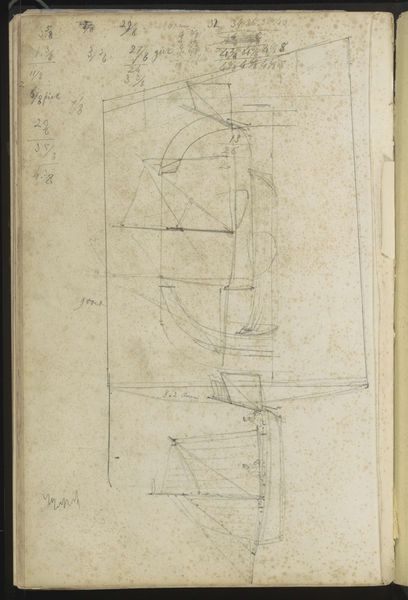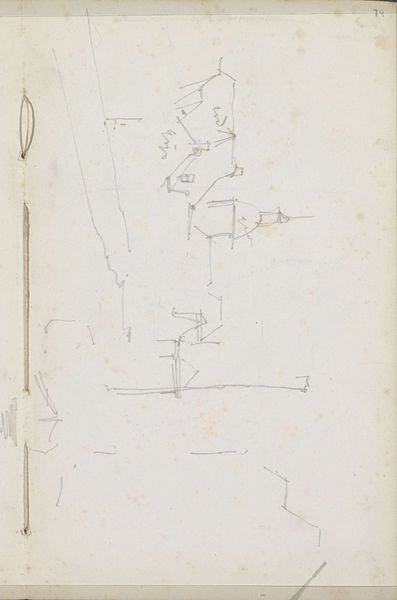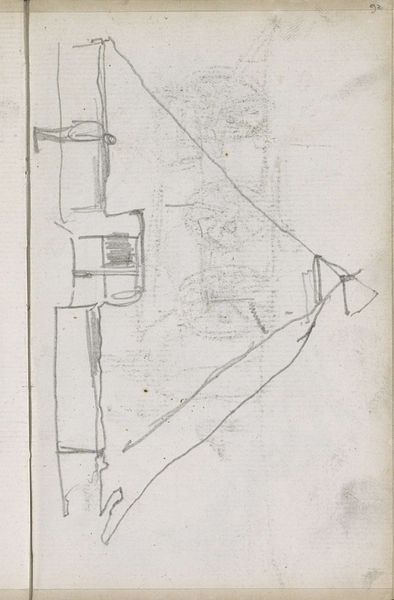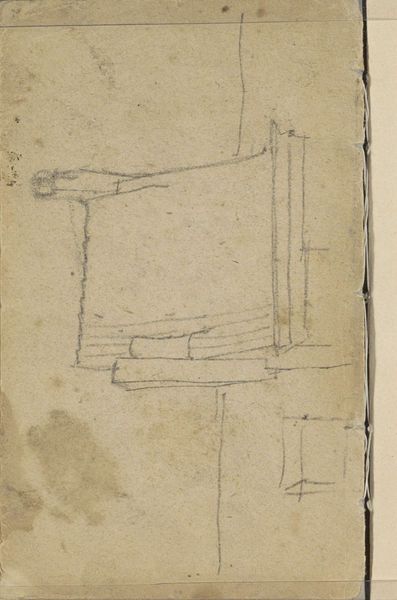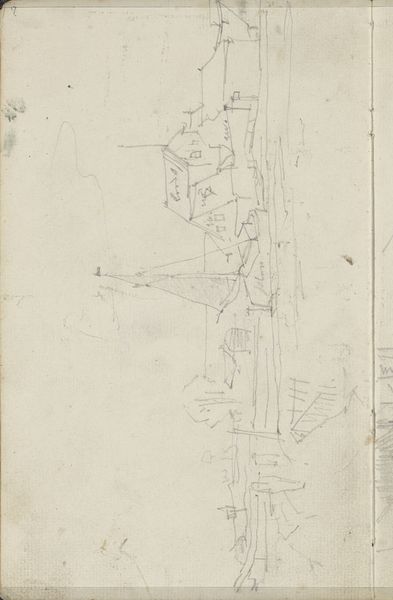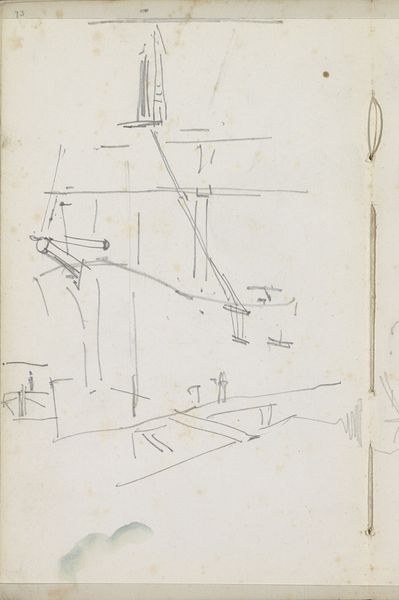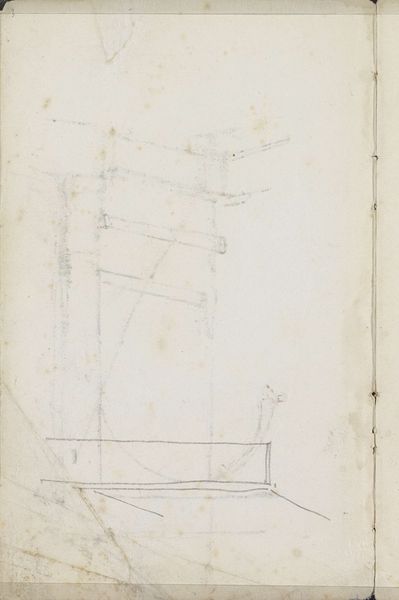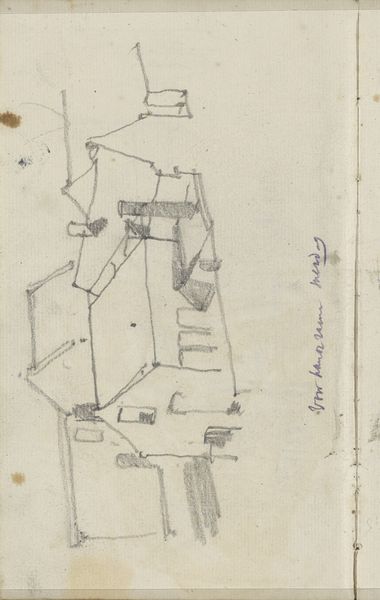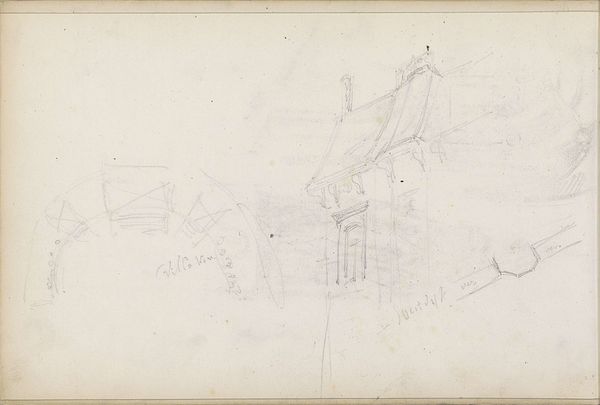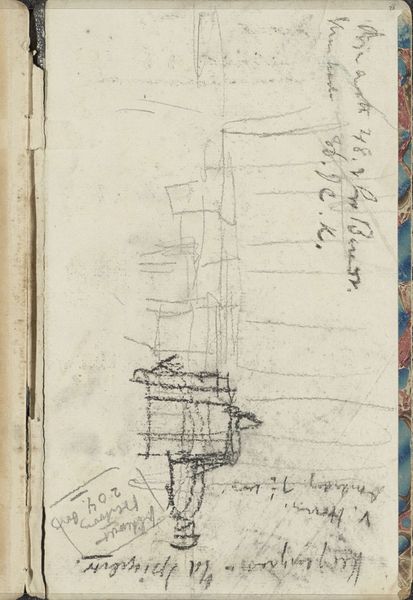
architecture
#
amateur sketch
#
aged paper
#
toned paper
#
sketch book
#
incomplete sketchy
#
tea stained
#
personal sketchbook
#
watercolour bleed
#
sketchbook art
#
watercolor
#
architecture
Copyright: Rijks Museum: Open Domain
Editor: This is "Architectuurstudie," an architectural study by George Hendrik Breitner, created sometime between 1886 and 1898. It looks like watercolor on aged paper, currently held at the Rijksmuseum. It has such a fleeting, almost dreamlike quality. What elements of its composition strike you? Curator: The incomplete, sketchy lines are key to understanding its semiotic function. Breitner is not aiming for photorealism but rather an exploration of form. The watercolor bleed further contributes to this sense of impermanence. Editor: So you're saying the looseness is deliberate? It doesn't try to give a clear representation, more of a feeling. Curator: Precisely. Consider how the artist uses line weight and perspective. Observe the structural relationship among the basic geometric forms. Do you see any instances where a line is left open, or where one form bleeds into another? Editor: Yes, there are several lines which seem to stop midway, and the use of watercolor bleeds gives this unfinished quality to the structure's edges. This contributes to that sense of something not quite real. What does this say about the role of sketching? Curator: I believe he may have been more interested in capturing the essence of the architecture. The architectural sketches offer us insight into the process by which he distilled his observations into pure form. In essence, what Breitner has provided for us is the deconstruction of visual experience into a formal record of its most basic components. Editor: So, it's not just about what's depicted, but how it's depicted and what that process reveals about the artist's intention. Thanks! It makes me appreciate it a lot more. Curator: It reveals the essence and materiality, offering new formal perspectives.
Comments
No comments
Be the first to comment and join the conversation on the ultimate creative platform.
